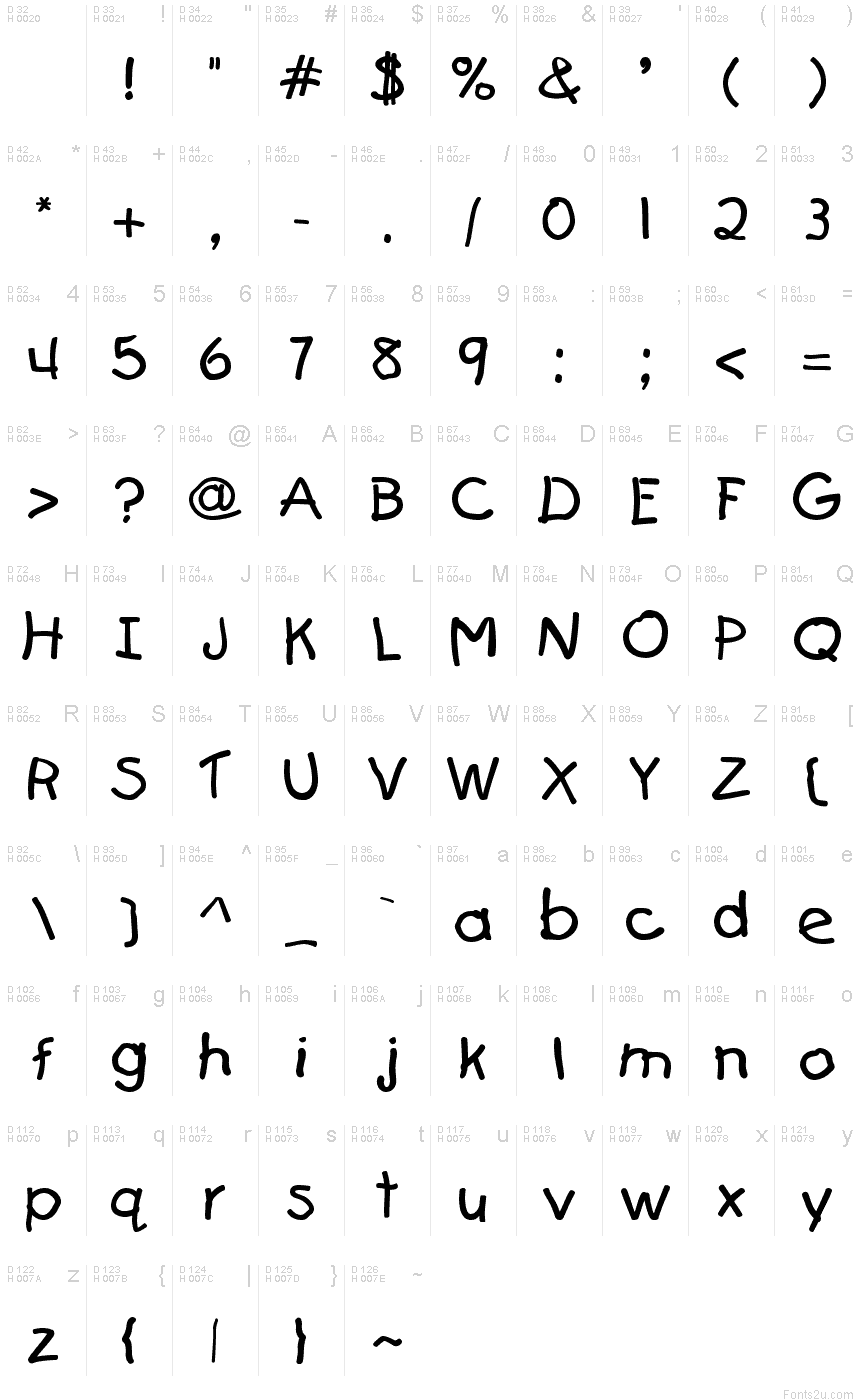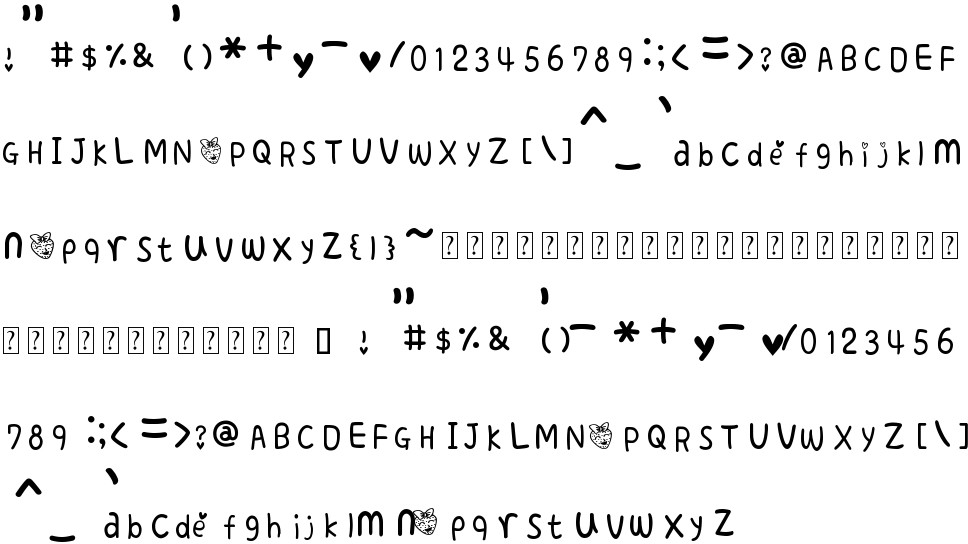Download Font Format Ttf Untuk Android
Related categories

Download Font X Code from East free August 31. This free Code 39 font is available in medium size and can be used in a variety of different operating systems and application.
Ttf Font Maker
 1 more style ... Italic
1 more style ... Italic Android is one of the most versatile mobile ecosystems that you'll ever use. From the look and feel, you can change the landscape of the platform with ease and power. The fonts on your system are no exception. There are plenty of reasons you might want to change up your fonts — legibility, company branding, unique look, etc. Although not available for every variation on the Android theme, you can manage to switch up your fonts without too much hassle. I want to illustrate how you can manage more and better fonts on both rooted and non-rooted Android devices.
The rooted Android device gives you quite a bit more control over what you can do. But even non-rooted smartphones have some flexibility when it comes to fonts. Let's first look at how to manage your fonts on a non-rooted device, and then I'll highlight the power of the rooted smartphone.
Non-rooted font management
Your best bet for managing fonts on a non-rooted Android device is by way of a third-party home screen launcher. GO Launcher EX is one of the best for fonts. With this home screen launcher, you can place third-party font files in to the GOLauncherEX/fonts folder and have GO Launcher EX scan the folder for newly found fonts.
There's one catch. When you plug your device into your computer to copy the .ttf file(s) over to the phone storage, you probably won't find the GOLauncherEX folder. To get around that, create a folder called FONTS in the Downloads folder — and then, using a file manager like ASTRO File Manager, copy/paste the .ttf file to GOLauncherEX/fonts (which will appear in the ASTRO File Manager). Once you've copied the files to the proper folder, do the following:
- Long-press a blank spot on the home screen
- Tap the Preferences button
- Tap Font
- Tap Scan font (Figure A)
- Allow the scan to complete
- Tap Select Font
- Locate the newly added font
- Tap Continue when prompted
Figure A
Adding new fonts via GO Launcher EX on a Verizon-branded LG G3.
That's it.
What if you don't want to use a third-party home screen launcher? If you happen to have a Samsung device, you're in luck (rooted or not). There's an app called iFont that helps you to find plenty of fonts to use. This app allows you to easily browse a sizable selection of fonts that you can download and install. Note: All other Android devices must be rooted for iFont to work.
First, you must install the app. Here's how:
- Open the Google Play Store on your Samsung smartphone
- Search for iFont
- Locate and tap the entry by diyun
- Tap Install
- Read the permissions listing
- If the permissions listing is acceptable, tap Accept
- Allow the installation to complete
Once it's installed, open the app and browse the font collection. To do this, tap Find on the main window (Figure B), and then tap Font All.
Figure B
Finding fonts with iFont.
Scroll through the listing of fonts, find one you like, tap the font, tap Download (Figure C), and then tap Set. The font should change to your downloaded choice.
Figure C
Installing your chosen font with iFont.
Some devices (such as the HTC M8) offer a Get Fonts Online from the built-in font selector (Figure D). Tap the GET FONTS ONLINE button, select the Play Store option, go through the listing of fonts, select one you like, and install the font.
Figure D
Getting fonts online.
Once the font is installed, you simply have to go to the default font selector and choose the newly added font.
Rooted font management
A rooted device will give you even more power with fonts. Using the same app as above (iFont), you can (with a rooted phone), install custom .ttfs to be used as your system defaults. To do this, the process is almost the same as setting a standard font (within iFont). The only difference is that you tap on My Font (from the main window) and then tap the 'click this' link (Figure E).
Figure E
Adding a custom .ttf font with iFont.
You will then navigate to the folder containing you .ttf files, select the font you want, and then tap Set.
There's another app you can use that will allow you to add .ttf files from your computer to your rooted smartphone and use them as the default system font. That app is Font Installer. Once installed, you can then copy your .ttf files (from your computer) into a directory on your device and use that font as the default. Font Installer is installed in the same way you installed iFont above (only you'll search for and install Font Installer). Once you've done that, here's how to set the font as your system default:
- Copy the .ttf files into a folder on your device
- Open Font Installer
- Swipe to the Local tab
- Navigate to the folder containing the .ttf files
- Select the .ttf file to be used (Figure F)
- Tap Install (or Preview if you want to get a look at the font first)
- If prompted, grant root permission for the app
- Reboot the device by tapping YES
Figure F
Installing a .ttf file with Font Installer.
The one caveat to using .ttf files is that not all .ttf files will actually work — or they'll work but won't be terribly legible. So, use caution when choosing a .ttf file for a font. Also, don't try to use both iFont and Font Installer on the same device, as iFont will always override Font Installer.
Finally, a word of warning with Font Installer: It doesn't work on all rooted devices, and not all rooting tools can give proper permissions. The Samsung Galaxy S4, rooted with Superuser, worked fine the first time, but after removing and reinstalling, the font would no longer set.
If you're looking for a clean and simple way to change the font, look no further than one of these methods. Whether rooted or not, you can find plenty of fonts to help personalize or brand your Android device.
How much do you customize your Android devices? Do you leave them stock or go all out? Share your experience in the discussion thread below.